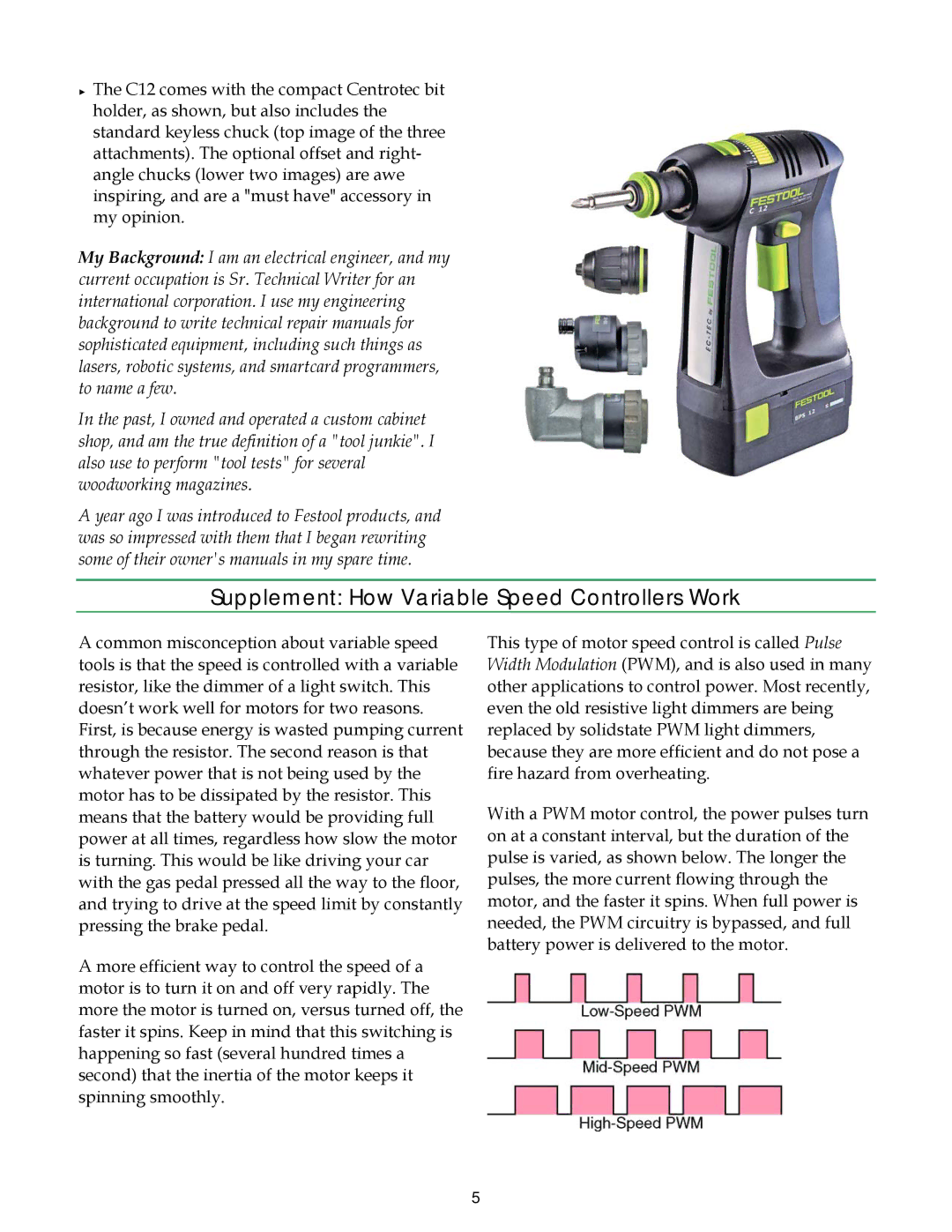
►The C12 comes with the compact Centrotec bit holder, as shown, but also includes the standard keyless chuck (top image of the three attachments). The optional offset and right- angle chucks (lower two images) are awe inspiring, and are a "must have" accessory in my opinion.
My Background: I am an electrical engineer, and my current occupation is Sr. Technical Writer for an international corporation. I use my engineering background to write technical repair manuals for sophisticated equipment, including such things as lasers, robotic systems, and smartcard programmers, to name a few.
In the past, I owned and operated a custom cabinet shop, and am the true definition of a "tool junkie". I also use to perform "tool tests" for several woodworking magazines.
A year ago I was introduced to Festool products, and was so impressed with them that I began rewriting some of their owner's manuals in my spare time.
Supplement: How Variable Speed Controllers Work
A common misconception about variable speed tools is that the speed is controlled with a variable resistor, like the dimmer of a light switch. This doesn’t work well for motors for two reasons. First, is because energy is wasted pumping current through the resistor. The second reason is that whatever power that is not being used by the motor has to be dissipated by the resistor. This means that the battery would be providing full power at all times, regardless how slow the motor is turning. This would be like driving your car with the gas pedal pressed all the way to the floor, and trying to drive at the speed limit by constantly pressing the brake pedal.
A more efficient way to control the speed of a motor is to turn it on and off very rapidly. The more the motor is turned on, versus turned off, the faster it spins. Keep in mind that this switching is happening so fast (several hundred times a second) that the inertia of the motor keeps it spinning smoothly.
This type of motor speed control is called Pulse Width Modulation (PWM), and is also used in many other applications to control power. Most recently, even the old resistive light dimmers are being replaced by solidstate PWM light dimmers, because they are more efficient and do not pose a fire hazard from overheating.
With a PWM motor control, the power pulses turn on at a constant interval, but the duration of the pulse is varied, as shown below. The longer the pulses, the more current flowing through the motor, and the faster it spins. When full power is needed, the PWM circuitry is bypassed, and full battery power is delivered to the motor.
5
